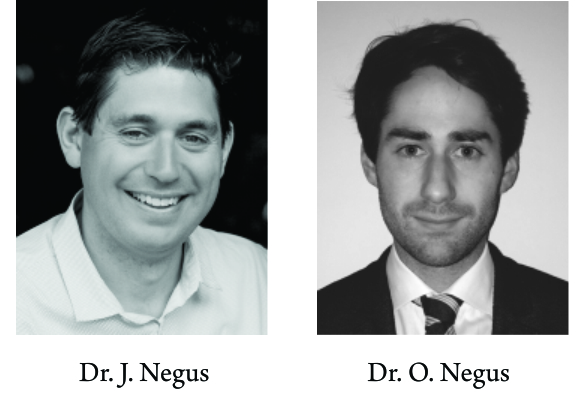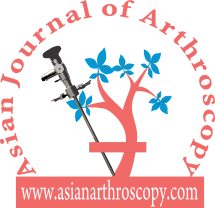Investigations for the Unstable Shoulder
Oliver James Negus, Jonathan James Negus
Volume 2 | Issue 1 | Jan – Apr 2017 | Page 7 – 14
Author: Oliver James Negus [1], Jonathan James Negus [2].
[1] Department of Orthopaedics, Norfolk and Norwich University Hospital, Norwich, England,
[2] Department of Orthopaedics, University College Hospital, London, England.
Address of Correspondence
Dr. Jonathan Negus,
Department of Orthopaedics, University College Hospital, London, England.
E-mail: jonathan.negus@cantab.net
Abstract
The unstable shoulder has a wide spectrum of presentations from the obvious dislocations to the subtle chronic instabilities. It is the job of the clinician who is interpreting the imaging to correlate a clear history with the pathology that can be seen and to go searching for the pathology that may not be obvious but could drastically alter management. For most cases, imaging is used mainly to direct further management than to diagnose. Therefore, it is critical to have access to the appropriate imaging modality taken in the correct manner to maximize the possibility of picking up all lesions. This review looks at the possible lesions and imaging modalities needed to diagnose them and more importantly, direct their future management.
Keywords: Shoulder instability, Shoulder imaging, Unstable shoulder, Shoulder dislocation.
References
1. Kim SH, Ha KI, Jung MW, Lim MS, Kim YM, Park JH. Accelerated rehabilitation after arthroscopic Bankart repair for selected cases: A prospective randomized clinical study. Arthroscopy 2003;19(7):722-731.
2. Itoi E, Hsu HC, An KN. Biomechanical investigation of the glenohumeral joint. J Shoulder Elbow Surg 1996;5(5):407-424.
3. Abboud JA, Soslowsky LJ. Interplay of the static and dynamic restraints in glenohumeral instability. ClinOrthopRelat Res 2002;400:48-57.
4. Itoi E. Pathophysiology and treatment of atraumatic instability of the shoulder. J OrthopSci 2004;9(2):208-213.
5. Arciero RA, Wheeler JH, Ryan JB, McBride JT. Arthroscopic Bankart repair versus nonoperative treatment for acute, initial anterior shoulder dislocations. Am J Sports Med 1994;22(5):589-594.
6. Hawkins RH, Hawkins RJ. Failed anterior reconstruction for shoulder instability. J Bone Joint Surg Br 1985;67(5):709-714.
7. Hovelius L, Augustini BG, Fredin H, Johansson O, Norlin R, Thorling J. Primary anterior dislocation of the shoulder in young patients. A ten-year prospective study. J Bone Joint Surg Am 1996;78(11):1677-1684.
8. Itoi E, Lee SB, Berglund LJ, Berge LL, An KN. The effect of a glenoid defect on anteroinferior stability of the shoulder after Bankart repair: A cadaveric study. J Bone Joint Surg Am 2000;82(1):35-46.
9. Robinson CM, Kelly M, Wakefield AE. Redislocation of the shoulder during the first six weeks after a primary anterior dislocation: Risk factors and results of treatment. J Bone Joint Surg Am 2002;84-A(9):1552-1559.
10. Rowe CR, Pierce DS, Clark JG. Voluntary dislocation of the shoulder. A preliminary report on a clinical, electromyographic, and psychiatric study of twenty-six patients. J Bone Joint Surg Am 1973;55(3):445-460.
11. Weber BG, Simpson LA, Hardegger F. Rotational humeral osteotomy for recurrent anterior dislocation of the shoulder associated with a large Hill-Sachs lesion. J Bone Joint Surg Am 1984;66(9):1443-1450.
12. Robinson CM, Howes J, Murdoch H, Will E, Graham C. Functional outcome and risk of recurrent instability after primary traumatic anterior shoulder dislocation in young patients. J Bone Joint Surg Am 2006;88(11):2326-2336.
13. Hintermann B, Gächter A. Arthroscopic findings after shoulder dislocation. Am J Sports Med 1995;23(5):545-551.
14. Anakwenze OA, Hsu JE, Abboud JA, Levine WN, Huffman GR. Recurrent anterior shoulder instability associated with bony defects. Orthopedics 2011;34(7):538-544.
15. Provencher MT, Frank RM, Leclere LE, Metzger PD, Ryu JJ, Bernhardson A, et al.The Hill-Sachs lesion: Diagnosis, classification, and management. J Am AcadOrthopSurg 2012;20(4):242-252.
16. Skendzel JG, Sekiya JK. Diagnosis and management of humeral head bone loss in shoulder instability. Am J Sports Med 2012;40(11):2633-2644.
17. Taylor DC, Arciero RA. Pathologic changes associated with shoulder dislocations. Arthroscopic and physical examination findings in first-time, traumatic anterior dislocations. Am J Sports Med 1997;25(3):306-311.
18. Bigliani LU, Newton PM, Steinmann SP, Connor PM, Mcllveen SJ. Glenoid rim lesions associated with recurrent anterior dislocation of the shoulder. Am J Sports Med 1998;26(1):41-45.
19. Sugaya H, Moriishi J, Dohi M, Kon Y, Tsuchiya A. Glenoid rim morphology in recurrent anterior glenohumeral instability. J Bone Joint Surg Am 2003;85-A(5):878-884.
20. Mologne TS, Provencher MT, Menzel KA, Vachon TA, Dewing CB. Arthroscopic stabilization in patients with an inverted pear glenoid: Results in patients with bone loss of the anterior glenoid. Am J Sports Med 2007;35(8):1276-1283.
21. Sterling M, Jull G, Wright A. The effect of musculoskeletal pain on motor activity and control. J Pain 2001;2(3):135-145.
22. Itoi E, Hatakeyama Y, Kido T, Sato T, Minagawa H, Wakabayashi I, et al.A new method of immobilization after traumatic anterior dislocation of the shoulder: A preliminary study. J Shoulder Elbow Surg 2003;12(5):413-415.
23. Miller BS, Sonnabend DH, Hatrick C, O’leary S, Goldberg J, Harper W, et al. Should acute anterior dislocations of the shoulder be immobilized in external rotation? A cadaveric study. J Shoulder Elbow Surg 2004;13(6):589-592.
24. McMahon PJ, Lee TQ. Muscles may contribute to shoulder dislocation and stability. ClinOrthopRelat Res 2002;403 Suppl:S18-S25.
25. McAuliffe TB, Pangayatselvan T, Bayley I. Failed surgery for recurrent anterior dislocation of the shoulder. Causes and management. J Bone Joint Surg Br 1988;70(5):798-801.
26. Balg F, Boileau P. The instability severity index score. A simple pre-operative score to select patients for arthroscopic or open shoulder stabilisation. J Bone Joint Surg Br 2007;89(11):1470-1477.
27. Di Giacomo G, Itoi E, Burkhart SS. Evolving concept of bipolar bone loss and the Hill-Sachs lesion: From “engaging/non-engaging” lesion to “on-track/off-track” lesion. Arthroscopy 2014;30(1):90-98.
28. Purchase RJ, Wolf EM, Hobgood ER, Pollock ME, Smalley CC. Hill-sachs “remplissage”: An arthroscopic solution for the engaging hill-sachs lesion. Arthroscopy 2008;24(6):723-726.
29. Burkhart SS, De Beer JF. Traumatic glenohumeral bone defects and their relationship to failure of arthroscopic Bankart repairs: Significance of the inverted-pear glenoid and the humeral engaging Hill-Sachs lesion. Arthroscopy 2000;16(7):677-694.
30. Lo IK, Parten PM, Burkhart SS. The inverted pear glenoid: An indicator of significant glenoid bone loss. Arthroscopy 2004;20(2):169-174.
31. Fedorka CJ, Mulcahey MK. Recurrent anterior shoulder instability: A review of the Latarjet procedure and its postoperative rehabilitation. PhysSportsmed 2015;43(1):73-79.
32. Frostick SP, Sinopidis C, Al Maskari S, Gibson J, Kemp GJ, Richmond JC. Arthroscopic capsular shrinkage of the shoulder for the treatment of patients with multidirectional instability: Minimum 2-year follow-up. Arthroscopy 2003;19(3):227-233.
33. Bigliani LU, Pollock RG, McIlveen SJ, Endrizzi DP, Flatow EL. Shift of the posteroinferior aspect of the capsule for recurrent posterior glenohumeral instability. J Bone Joint Surg Am 1995;77(7):1011-1020.
34. Antoniou J, Duckworth DT, Harryman DT 2nd. Capsulolabral augmentation for the the management of posteroinferior instability of the shoulder. J Bone Joint Surg Am 2000;82(9):1220-1230.
35. Pollock RG, Bigliani LU. Recurrent posterior shoulder instability. Diagnosis and treatment. ClinOrthopRelat Res 1993;291:85-96.
36. Wirth MA, Groh GI, Rockwood CA Jr. Capsulorrhaphy through an anterior approach for the treatment of atraumatic posterior glenohumeral instability with multidirectional laxity of the shoulder. J Bone Joint Surg Am 1998;80(11):1570-1578.
37. Kim SH, Ha KI, Yoo JC, Noh KC. Kim’s lesion: An incomplete and concealed avulsion of the posteroinferior labrum in posterior or multidirectional posteroinferior instability of the shoulder. Arthroscopy 2004;20(7):712-720.
38. Inman VT, Saunders JB, Abbott LC. Observations of the function of the shoulder joint 1944. ClinOrthopRelat Res 1996;330:3-12.
39. Wilk KE, Arrigo C. Current concepts in the rehabilitation of the athletic shoulder. J Orthop Sports PhysTher 1993;18(1):365-378.
40. Bowen MK, Warren RF. Ligamentous control of shoulder stability based on selective cutting and static translation experiments. Clin Sports Med 1991;10(4):757-782.
41. O’Brien SJ, Neves MC, Arnoczky SP, Rozbruck SR, Dicarlo EF, Warren RF, et al. The anatomy and histology of the inferior glenohumeral ligament complex of the shoulder. Am J Sports Med 1990;18(5):449-456.
42. Cain PR, Mutschler TA, Fu FH, Lee SK. Anterior stability of the glenohumeral joint. A dynamic model. Am J Sports Med 1987;15(2):144-148.
43. Riemann BL, Lephart SM. The sensorimotor system, part I: The physiologic basis of functional joint stability. J Athl Train 2002;37(1):71-79.
44. Vangsness CT Jr, Ennis M, Taylor JG, Atkinson R. Neural anatomy of the glenohumeral ligaments, labrum, and subacromial bursa. Arthroscopy 1995;11(2):180-184.
45. Rossi A, Grigg P. Characteristics of hip joint mechanoreceptors in the cat. J Neurophysiol 1982;47(6):1029-1042.
46. Pedersen J, Lönn J, Hellström F, Djupsjöbacka M, Johansson H. Localized muscle fatigue decreases the acuity of the movement sense in the human shoulder. Med Sci Sports Exerc 1999;31(7):1047-1052.
47. Johansson H, Sjölander P, Sojka P. A sensory role for the cruciate ligaments. ClinOrthopRelat Res 1991;268:161-178.
48. Dietz V, Noth J, Schmidtbleicher D. Interaction between pre-activity and stretch reflex in human triceps brachii during landing from forward falls. J Physiol 1981;311:113-125.
49. Smith RL, Brunolli J. Shoulder kinesthesia after anterior glenohumeral joint dislocation. PhysTher 1989;69(2):106-112.
50. Tibone JE, Fechter J, Kao JT. Evaluation of a proprioception pathway in patients with stable and unstable shoulders with somatosensory cortical evoked potentials. J Shoulder Elbow Surg 1997;6(5):440-443.
51. Carpenter JE, Blasier RB, Pellizzon GG. The effects of muscle fatigue on shoulder joint position sense. Am J Sports Med 1998;26(2):262-265.
52. Lephart SM, Henry TJ. Functional rehabilitation for the upper and lower extremity. OrthopClin North Am 1995;26(3):579-592.
53. Davies GJ, Dickoff-Hoffman S. Neuromuscular testing and rehabilitation of the shoulder complex. J Orthop Sports PhysTher 1993;18(2):449-458.
54. Cavagna GA, Dusman B, Margaria R. Positive work done by a previously stretched muscle. J ApplPhysiol 1968;24(1):21-32.
55. Kibler WB, Wilkes T, Sciascia A. Mechanics and pathomechanics in the overhead athlete. Clin Sports Med 2013;32(4):637-651.
56. Sciascia A, Thigpen C, Namdari S, Baldwin K. Kinetic chain abnormalities in the athletic shoulder. Sports Med Arthrosc 2012;20(1):16-21.
57. McMullen J, Uhl TL. A kinetic chain approach for shoulder rehabilitation. J Athl Train 2000;35(3):329-337.
58. Kibler WB, Sciascia A, Thomas SJ. Glenohumeral internal rotation deficit: Pathogenesis and response to acute throwing. Sports Med Arthrosc 2012;20(1):34-38.
59. Borstad JD, Ludewig PM. The effect of long versus short pectoralis minor resting length on scapular kinematics in healthy individuals. J Orthop Sports PhysTher 2005;35(4):227-238.
| How to Cite this article:. Negus OJ, Negus JJ. Investigations for the Unstable Shoulder. Asian Journal of Arthroscopy Jan – April 2017;1(2):7-14 . |




Leave a Reply
Want to join the discussion?Feel free to contribute!